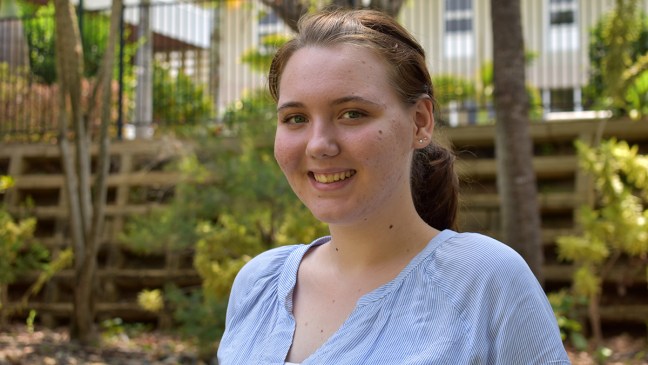By Chilli Crawford, a Rockhampton-based 2020 Year 12 student
As a Queensland student moving into Year 12 in 2020 – staring down the barrel of my QCE (Queensland Certificate of Education – the HSC and VCE equivalent), finishing school and applying for university – the ATAR system came as a very daunting surprise. When my fellow Year 11 cohort and I were told of the complete renovation of the old OP system and that we were the pioneers (or rather guinea pigs) for the new ATAR system, we were all extremely hesitant. Although the ATAR system made the grading scales much fairer between public and private schools, the influx of self-learning and teaching immediately displeased us as we felt as if we were already stressed and overworked as it was. However, in hindsight, the issues and complaints we expressed simply sprouted from a fear of change. As throughout my current and ongoing experience with ATAR, I have found that whilst there is now a significant amount of self-management placed on me, the system and marking criteria is ultimately quite beneficial.
OP and ATAR – What’s the difference?
The two systems do vary significantly in multiple aspects and there is a much higher expectation for self-management. The different aspects include the way the scores are determined, the calculation of the scores and the way content is taught. There are a lot of changes and adaptations, but these have allowed the new system to be much better suited for the following graduates.
Ranking systems and calculations
The OP system operated as a very broad ranking system with a 0 to 25 score and was calculated through five levels of achievement, as well as the smaller comparisons from each class (SAIs). SAIs was a number given between 200 and 400 that was assigned to OP eligible students by their teacher. SAIs and the achievement level contribute to the OP result, along with the QCS testing.
The new ATAR system, however, ranks from 0 to 99.95, with any score under 30 not reported. The ranking goes up in 0.5 increments and takes into account VET and SAS scores of the students, which the previous OP system neglected. An ATAR is calculated through four pieces of assessment per subject. However, the most significant change has occurred outside the grading and testing aspect and rather falls onto the students themselves. Within the new system, there is an abundance of information that needs to be covered, yet there often isn’t enough class time to teach it. Therefore, there is a responsibility for students to continue their own independent learning outside of school hours which includes during their holidays. 🙁
Personally, I have never had an issue with studying on my own time as it has become something I enjoy rather than loathe. However, one issue I do face, along with a majority of my peers, is the tendency to overwork myself. This trait is worsened by the pending tsunami of work that ATAR brings, which is why I have found it crucial to limit my study time. Many of my peers have encountered the same issue as we all found it hard to adapt to the sudden influx of work. This idea of self-management and self-learning was not evident in the previous OP system, yet plays a significant role in the ATAR system.
QCS change
The QCS (Queensland Core Skills) testing is perhaps the most terrifying aspect of Year 12 – that is for OP students. On the new ATAR system, the QCS testing is not applicable. It is instead replaced by four core assessments per subject, one of which is externally sat and graded by the QCAA (Queensland Curriculum and Assessment Authority). The three internal assessments are designed to lay the foundations for the external assessment, with the fourth assessment being the applied use of these skills. Without the need for a QCS testing period, there is more time for in-class learning, which helps with the increase in learning material.
What’s the QCE?
Queensland’s senior schooling qualification, the QCE, has also had an overhaul in 2019 for my cohort. The QCE is accumulated through points. For each unit of a subject that is passed, a point is gained. Additions such as certificates and school-based traineeships also add points to a student’s QCE. In order to receive a QCE, a student must accumulate a total of 20 points throughout their senior schooling. This shouldn’t be too difficult for most, but the opportunity for students to catch up after year 12 is also an option for those participating in vocational education and training courses or traineeships. I should also mention here that the requirements of the QCE are different from those for an ATAR. To achieve an ATAR score, a student’s best results for five general subjects are calculated, or alternatively from a student’s best results of four general subjects and one applied subject or VET qualification at Certificate III or above.
Wrapping up
ATAR is a very new and at first intimidating system, however, it hopes to be very beneficial for graduating high school students from 2020 and beyond. ATAR covers what the OP system did not, as well as providing a much more even scope for high school students across Australia. Some tips to survive the Year 12 ATAR is to remain on top of your study, despite how laborious it might seem. Everyone knows that homework sucks, but with the ATAR system, the more that you revise and relearn, the easier it will be to perform during assessments. The Australian Government intended to improve the old OP system, which it has in the form of the ATAR system. The new system has ironed out the playing field between private and public schools and is incorporating aspects that the OP system neglected. In all, the ATAR system is a welcomed change to a simply outdated system and now Queensland students are running the same race as the rest of the country.


Great article. My question; why can adequate content no longer be taught during school hours? I don’t believe that graduates today have been taught more relevant knowledge and skills than ever before; instead it seems that the education system has been burdened with a lot of garbage which hinders teachers from simply teaching the content. More homework is not a solution, it is a side effect.